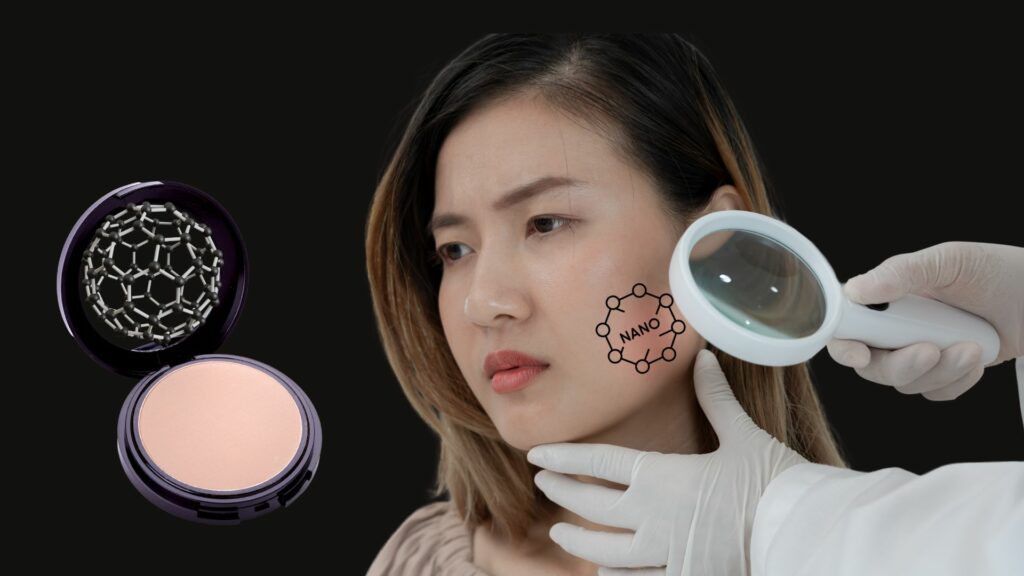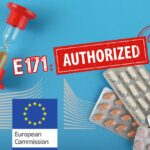
Fullerenes in cosmetics: major risks – and yet…
A committee of European experts expresses serious concerns about the use of fullerenes in cosmetics. Surprisingly, these nanomaterials no longer fall under the category of such substances according to the new 2022 definition recommendation. This development raises questions about the efficacy of the new definition, potentially leaving other problematic nano-sized substances unregulated.
In July 2021, following 19 notifications for cosmetics containing fullerenes, hydroxylated fullerenes and hydrated forms of hydroxylated fullerenes, the European Commission had referred the matter to the Scientific Committee on Consumer Safety (SCCS) to assess their risks1Cf. Request for a scientific opinion on “Fullerenes, Hydroxylated Fullerenes and hydrated forms of Hydroxylated Fullerenes”, SCCS, July 2021. These carbon-based spherical or caged structures, with diameters often less than 1 nanometer, are prevalent in various cosmetic products. The Commission sought the SCCS’s opinion due to concerns about their small size, which enables nanoparticles to traverse the skin barrier, mucous membranes, and even penetrate cells.
Fullerenes in cosmetics: a health risk according to SCCS experts
Published today, the SCCS report highlights a number of concerns, including the genotoxic potential of fullerenes (C60 and C70) and the genotoxicity of hydrated forms of hydroxylated fullerenes. Additional worries include the possible presence of impurities, the generation of oxygenated free radicals, phototoxicity (harmful reaction to light), sensitization (potential allergic reaction),skin absorption, and organ distribution and accumulation.
Valued today… but a few years off, they could have slipped through the net
Until recently, fullerenes and their deratives were considered nanomaterials, subject to specific assessment by the SCCS.2Article 16 of the Cosmetics Regulation requires that products containing nanomaterials be notified to the European Commission, and that the SCCS assess the risks in case of concern..
However, the 2022 definition recommendation by the European Commission, excludes fullerenes3While fullerenes had been exempted from the previous 2011 definition recommendation to include those with a diameter of less than 1 nanometer, they now find themselves totally excluded from the new definition due to their categorization as “single molecules”. and other nanostructured objects from the definition, highlighting potential flaws in the regulatory framework.
Highlighting the shortcomings in the revised definition of ‘nanomaterials’?
This exclusion, if applied earlier, could have hindered the assessment of specific risks associated with fullerenes in cosmetics. Cosmetics brands might have refrained from notifying the Commission about the presence of fullerenes, assuming they were simply carbon-based.
In addition to the intrinsic value of the SCCS’s expertise, which points to the lack of data and the risks of fullerenes, the SCCS’s opinion is therefore also an opportunity to yet another illustration of the benefits of an all-encompassing definition of “nanomaterials” as recommended by the Agence nationale de sécurité sanitaire de l’alimentation, de l’environnement et du travail (Anses).
In its May 2023 report, Anses warned against the exclusion of fullerenes and other nanostructured objects from the definition:“from a health point of view, there is no justification for such exclusion“. If the new definition is applied without modifications in sector-specific regulations (Cosmetics, Novel Foods, etc.), it would mean that rapidly developing nanometric objects, such as fullerenes and their derivatives, may go unnoticed in sector-specific regulations, potentially deeply compromising consumer safety.. and not to mention the environment !

Our information sheets to go further
Upcoming Nano Agenda

- Scientific conference
- 23rd International conference on Advanced Nanomaterials
- From July 23 to July 25, 2025
- Website: www.advanced-nanomaterials-conference.com

- E-learning program: awareness-raising for personnel who come into contact with nanomaterials during research, formulation, production, maintenance, cleaning, upkeep, etc., as well as safety coordinators or engineers, facility managers, heads of laboratories where nanoparticles are handled.
- Organizers: INSTN Grenoble (CEA)
- On the program:
- 1 – Introduction, definition and characteristics of nanomaterials
- 2 – Toxicity of nanomaterials: the state of knowledge
- 3 – Metrology and characterization of nanomaterials
- 4 – Prevention and protection against nanomaterials in the workplace
- 5 – Quiz: assessment of learning outcomes
- The 2-hour course can be viewed for one month from the date of registration.
- Website: https://instn.cea.fr/…risques-lies-aux-nanomateriaux…

- E-learning program: awareness-raising for personnel who come into contact with nanomaterials during research, formulation, production, maintenance, cleaning, upkeep, etc., as well as safety coordinators or engineers, facility managers, heads of laboratories where nanoparticles are handled.
- Organizers: INSTN Grenoble (CEA)
- On the program:
- 1 – Introduction, definition and characteristics of nanomaterials
- 2 – Toxicity of nanomaterials: the state of knowledge
- 3 – Metrology and characterization of nanomaterials
- 4 – Prevention and protection against nanomaterials in the workplace
- 5 – Quiz: assessment of learning outcomes
- The 2-hour course can be viewed for one month from the date of registration.
- Website: https://instn.cea.fr/…risques-lies-aux-nanomateriaux…
Notes and references
- 1
- 2Article 16 of the Cosmetics Regulation requires that products containing nanomaterials be notified to the European Commission, and that the SCCS assess the risks in case of concern.
- 3While fullerenes had been exempted from the previous 2011 definition recommendation to include those with a diameter of less than 1 nanometer, they now find themselves totally excluded from the new definition due to their categorization as “single molecules”.






